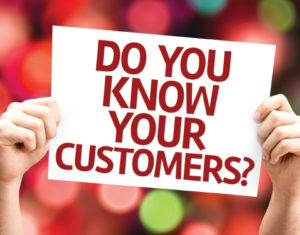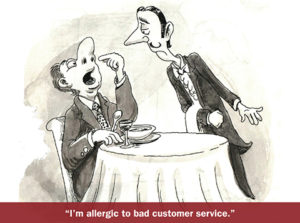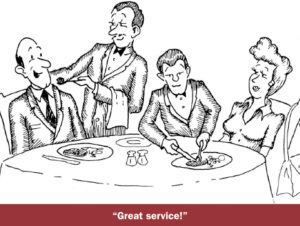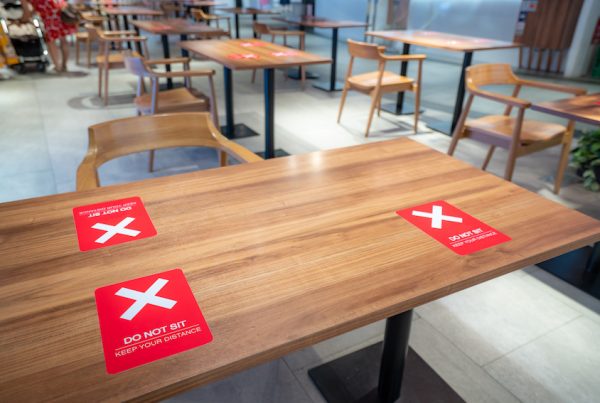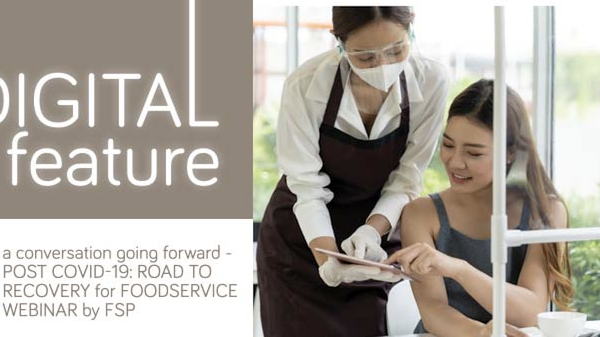Knowing customers is the key to any endeavour in the food and beverages (F&B) industry. The depth of knowing what type of person would likely go for the menu offerings you provide goes beyond knowing their name, age and income level. And that, starts only as you challenge assumptions.
BREAK OUT OF THE OWNER MINDSET
As a restaurateur, start by challenging the way you think of your customers. Assuming customer analysis that have worked well in the past will work in the future is a severe roadblock to the development of your business philosophy. As a restaurateur, you may want to add the finishing touch of minced garlic with pepper flakes on your spaghetti to add value to your customers. Your customers, however, may not necessarily like it because the garnish is simply annoying to them.
Truth is, it is often a challenge for restaurateurs and customers to meet in the middle. In the F&B industry, 80 percent of restaurants fail within the first five years because they fail to resonate with their customers. In fact, many of them believe they know what their customers want but often allow their creative vision to cloud their business sense.
Fortunately, many Southeast Asian restaurants that operate as franchises in countries like the U.S. and Canada defy the gravity of this failure. These restaurants strategically highlight the authenticity of the ethnic food they offer, and at the same time – offer wide-ranging options of food and fusion to serve a larger market of customers in the territory they operate.
So, look beyond your vision into what your customers really want – observe what draws customers in and turns them into repeat customers. Identify the big sellers for one-time visitors, construct strategies out of their tendencies, and integrate your vision into their reality. Once you’re armed with this information, don’t be afraid to tweak your menu to increase customer retention.
Source: Modern Restaurant Management
MINING CUSTOMERS’ BUYING BEHAVIOUR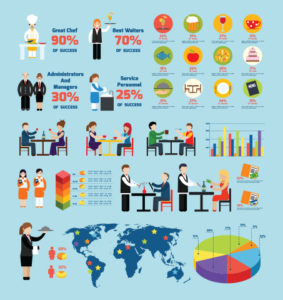
In the age of customer retention, you need to train yourself
to see the world through your customers’ eyes. After all,
every customer has the need to be understood.
One practical way you can better understand them is using
Google’s keyword planner. Keyword research allows your
restaurant to not only understand the terms customers use
to find what they need, but also, to understand competitive
scores. Search for keywords by entering your city name,
along with the term “restaurants.” After selecting your
product category, click “get ideas.” This will show you the
number of times a specific phrase or keyword is searched
by online individuals every month.
In fact, many start-up restaurants among established
restaurants are beginning to merge the data on customers,
competitors, employee performance, and data on sales
by minutes. Tender Greens, a quick-service restaurant chain based in Los Angeles, is even using data to guide its expansion in East Coast. Nando’s Malaysia too, is transforming one of the leading casual dining chains in Southeast Asia by taking a data-first approach.
Although you don’t necessarily need to use “big data” to improve your restaurant, basic data on customer’s buying patterns can fundamentally help your restaurant in knowing your customers. Learn to recognize the rights tools and the right people to help you. After all, your data means nothing if you don’t use them.
To initiate that, these are some of the key questions that you can ask your customers or yourself as a restaurateur on a regular basis:
- What are your customers’ values?
Although your menu mix analysis can give you the big picture of what’s happening, understand the complexities of the choices your customers are making. Imagine what makes your target customer want to eat at your restaurant – don’t just stop at the surface qualities. Go beyond simple logic like price or quality of service and include the psychographic factors of your customers such as their motivation to spend, emotional characteristics and the deeper goals they carry. - Why are they at your restaurant that day?
Your restaurant may come up with innovative beverages or simply catch up with the F&B trends of the year. But regardless of how cool you think your menu offerings are, consider what really brought your customers to your restaurant. It could be their kids, or the leisure following their dinner, or even the distance. - What do your customers think about you?
Comprehending what customers think of you is very important to craft customer communications, take accountability for problems that exist, and manage customer expectations. You can only tackle problems if you know what they are.
From these information, you can conduct customer profiling. Using the in-depth analysis of age, income levels, family status, family background, likes and dislikes, daily routine, sports interest, and cultural interests, customer profiling so effectively gauges the needs of your customers. It pushes you to visualize the exact type of individuals you’re targeting and determines which market segments are most productive and profitable.
 UNDERSTANDING CUSTOMERS THROUGH SOCIAL MEDIA
UNDERSTANDING CUSTOMERS THROUGH SOCIAL MEDIA
Everywhere you look, people have their eyes locked on to their smartphones. Facebook, Twitter, Instagram, YouTube, you get it – you know your restaurant needs to be active on social media. Contrary to the popular belief that it’s only the millennials and tech-savvies of 20-somethings that use social media today, people of all ages check out social media on a regular basis.
According to the Customer Satisfaction Index of Singapore, the F&B sectors showed an uptrend in customer satisfaction in year 2016. But the results also showed a significant decline in expected quality among locals for certain F&B establishments, including restaurant bars, snack bars, cafes, and food courts. The change was shaped by two main factors – word of mouth and social media.
For restaurants, social media is more than just marketing. In restaurants such as Chicago’s Alinea, Boston’s Myers and Flour Bakery, chefs personally tweet photos of kitchen staffs at work. This is because through behind-the-scenes of the restaurant, customers are seeking familiarity with the chefs – all for the sake of a deeper connection.
Customers want to connect with the restaurant even before they come into the restaurant. So, remember, the experience of your customers doesn’t end when they pay and walk out of your restaurant – it may have started long before they even entered your restaurant.
Besides social media, customers are also using online platforms to check restaurant’s ratings and reviews. Included in this list is Yelp, Zomato, Open Table, Zagat, TripAdvisor, Gayot, and Dine amongst many others. Themed events, Facebook ads, and other social networking platforms too, are particularly powerful tools that tap into the minds of your customers.
Source: The Business Times
WHAT ARE CUSTOMERS EXPECTING?
Expectations are a crucial determinant of behaviours. In Japan, for instance, the customers have a very high expectation of service without having to additionally pay for it. This is extremely different for restaurants in the U.S. whereby customers very much expect “what you get is what you pay for.”
This is an evidence that for restaurant guests, depending where your restaurant is located, the experience of dining out is a combination of many distinct parts. When each piece of the overall experience is executed well, guests are satisfied and eager to return. But one missing note can so tremendously and negatively colour their opinions.
Although customers’ expectation isn’t always about technology, quality, or taste, here are some pieces of trending customers’ expectations on the horizon that can help you complete the pieces of your restaurant’s dining experience.
Mobile App Ordering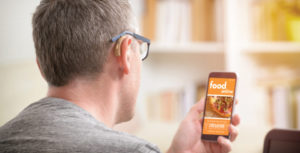
As the result of increasing web connectivity and unprecedented levels of smartphone in Asia, more restaurants are teaming up with one-stop mobile apps that does everything from food delivery to restaurant reservations. The largest food delivery app in Korea, Baedal Minjok, has an average of 2.7 million users every month. Due to consumers’ on-the-go lifestyle, mobile apps seem to accommodate customers in spending less waiting time and effort to order their meals, both for sit-ins and take outs.
Loyalty Programs
Loyalty programs is not new, but how they’re being  implemented in the present time is new. Switching to a mobile app to offer loyalty programmes are becoming increasingly popular for restaurants around the globe. Such trend is a significant response to customers’ loyalty. In fact, a research by National Restaurant Association shows that 57 percent of customers are more likely to visit restaurants that offer loyalty program to its’ customers, for the second time.
implemented in the present time is new. Switching to a mobile app to offer loyalty programmes are becoming increasingly popular for restaurants around the globe. Such trend is a significant response to customers’ loyalty. In fact, a research by National Restaurant Association shows that 57 percent of customers are more likely to visit restaurants that offer loyalty program to its’ customers, for the second time.
Healthful Options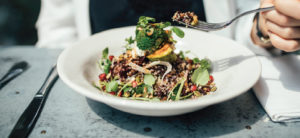
While many diners are pushing away the idea of processed food and opting for fresh and organic food in their daily routine, going green is not about switching to a tasteless tofu and a diet of plain vegetables. For restaurants that have joined the road of healthy offerings, there is plenty of innovation happening with shape, colour, and the element of playfulness in menu offerings, which is something that consumers want. In this area of change, sauces, bakery, snacks, and seasonings are potential emerging agents for product innovation. Mai Kaidee in Thailand, Sari Organik in Bali, and Brownice in Singapore are among some of the restaurants that have considered offering healthful options their customers, beyond having an obligatory salad or two on the menu.
The Experience
 About 40 percent of consumers prefer to have an experience rather than buying a physical good. Rebecca LeHeup, the executive director of the Ontario Culinary Tourism Alliance certainly agrees with this. “Be it a festival, food trail or tour, destinations creating new experiences need to think about the millennial consumer and what’s important to them.” Food trucks and restaurants or cafes with urban landscapes, for instance, have become popular foodie hubs that satisfy the millennial values. With this ongoing culinary wanderlust, restaurants need to adjust, stick to selling what they are, and create more value through quality.
About 40 percent of consumers prefer to have an experience rather than buying a physical good. Rebecca LeHeup, the executive director of the Ontario Culinary Tourism Alliance certainly agrees with this. “Be it a festival, food trail or tour, destinations creating new experiences need to think about the millennial consumer and what’s important to them.” Food trucks and restaurants or cafes with urban landscapes, for instance, have become popular foodie hubs that satisfy the millennial values. With this ongoing culinary wanderlust, restaurants need to adjust, stick to selling what they are, and create more value through quality.
Source: The Wall Street Journal
About 92% of executives in Asia believe the expectations of quality among customers have increased significantly in the past five years. Customers in Asia and around the globe definitely appear to demand better service in the present day, and this is evident throughout malls, bars, cafes and restaurants.
That only tells us that innovation is inherently a hitor- miss endeavour – so, take time to learn what customers expect before coming up with the “new thing in the block.” To obtain objective insights, consider your restaurant from the customer’s standpoint and take a step back if you need to. Learn to get inside your customers’ heads and execute corrections from important feedbacks – or risk perishing.

